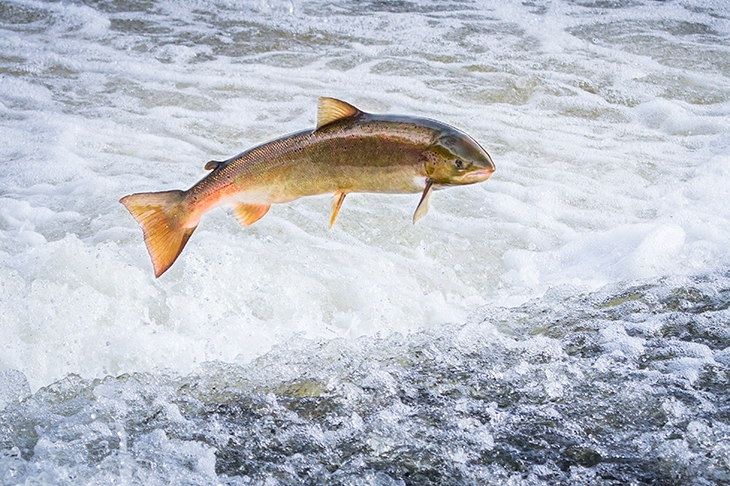In the Pacific Northwest, Native Americans paint images of salmon on to stones. They say that if you rub those stones you will acquire the fish’s two great qualities: determination and energy. Not so long ago these communities’ diets consisted of more than 80 per cent salmon, and they believed it to be a wondrous thing that the migratory fish returned on the same week every year. They also believed they ‘owed the salmon respect and gratitude’ — and if they failed in this they might stop coming back.
In the 19th and 20th centuries their fears were realised. But it wasn’t Native Americans who were disrespectful to the once abundant salmon; it was those who came from Europe, with a wish to get rich and tame the wild. Mark Kurlansky’s book is an epic, environmental tragedy, with the salmon at its centre as the abused hero, and a long list of supporting characters, from Scottish fly fishermen to Japan’s indigenous Ainu people.
In a sense, the world is awash with salmon. In sushi bars and supermarkets, the fish is affordable fare; but there is an unseen ecological price. Almost all of these fish come from tightly packed, lice-ridden cages. Since 3500 BC, people have been tinkering with fish farming; but it was only in the 1970s, spurred by dwindling wild stocks, that salmon farming exploded. Currently, in Norway, there are ‘about 400 million farmed fish and only about 500,000 wild’. The picture is similarly destructive in Scotland and British Colombia.
Almost all the salmon we now eat come from tightly packed, lice-ridden cages
The key charges the industry faces are that the waste is polluting, that parasitic lice in the cages latch on to passing wild fish, and that escapees breed with native stock, resulting in weak hybrids that seldom survive.







Comments
Join the debate for just £1 a month
Be part of the conversation with other Spectator readers by getting your first three months for £3.
UNLOCK ACCESS Just £1 a monthAlready a subscriber? Log in